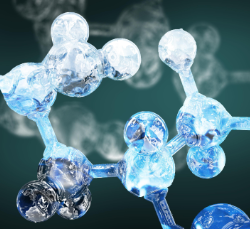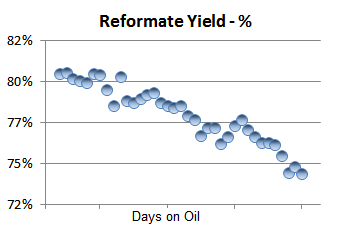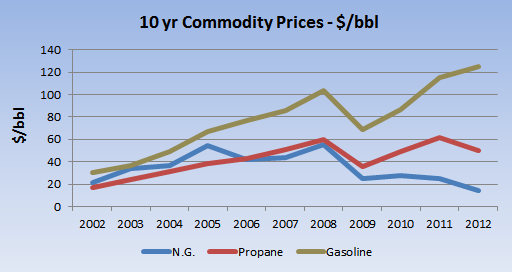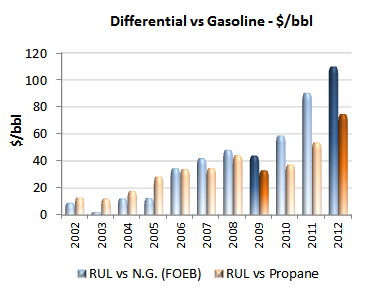RL Blogs

By Process Pro Eric
Jun 18, 2012If you have a runlength philosophy for regenerating your fixed-bed reformer that has not changed for a couple of years, you may want to revisit it again. |
||||||
Over the recent years, however, there has been a fundamental shift in Natural Gas and LPG pricing that challenges refiners to re-assess every strategy of operation. With the abundance of natural gas that hydraulic fracking has unlocked, understanding the impacts of de-activated reformer catalysts beds should be a high priority.
Refiners should revisit semi-regen reformer runlength strategies even more today as increased ethanol blending and rising distillate strength has also had an effect on reformer operations.
As semi-regen reformer catalyst ages over time, the process requires more heat to meet reformate octane targets. This higher heat input results in increased cracking of
impact on yields. Several years ago the reformate yield degradation impact on refinery margin was lower, but currently this penalty is quite significant. Note the trend of commodity prices over the last several years.
The differential between natural gas ($/FOEB) and gasoline was $ 43 /bbl in 2009, but has exploded to $110 /bbl in 2012. Similarly, the spread between gasoline and LPG
in margin for a delayed catalyst regeneration has now turned into a $1.0 Million loss per month for every 1% yield degradation.
On a 5% yield degradation scenario, a $2.5 Million per month loss increases to $5.0 Million per month! It’s likely that many of you have not seen the impacts of lost reformer catalyst activity spelled out in hard dollars before, so these figures may seem staggering.
Given that market prices have inflated the penalty for extended semi-regen runlengths, I have just provided you the business case to re-evaluate your current reformer strategy. No refiner ever likes increasing the frequency of shutdowns. However, the economics highlighted above indicate a strong driver to do so.
Do you not think that there is a compelling case to better optimize your fixed bed reformer runlength strategy? I doubt that you will even need an LP to tell you the answer to this one. | ||||||
|
|













